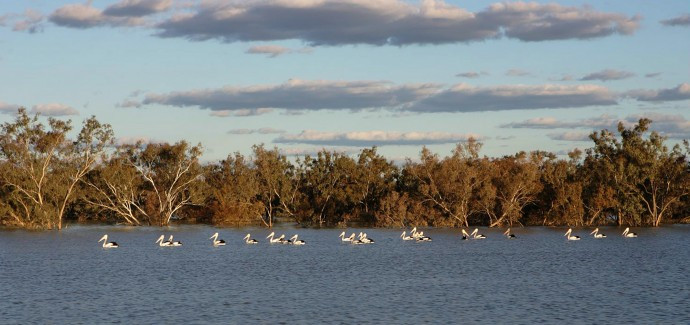Chemical Pollution and Climate Change Threatening 1,300 Species of Birds

More than 1,300 species of birds are threatened with extinction, with chemical pollution and climate change two major culprits. Because of these and other dangers, the status of most of the endangered species is deteriorating, according to BirdLife International.
In the majority of cases, the blame lies with humans, with loss of habitat and chemical contamination of the environment posing a serious threat to birds. The destruction of wetlands, forests and plains has also diminished birds' food supply, according to Environmental Health News.
The impact of chemicals on birds is drastic. In South America, parakeets have lost thousands of acres of their habitat due to herbicide sprayed on marijuana and coca plantations. In Antarctica, flame retardants and other pollutants used by researchers are having adverse effects on Adelie penguins.
Red kites have suffered huge losses in number in the UK, France and Spain, having swooped in on poison meant for foxes and wolves.
Vultures in Asia have succumbed to a toxic veterinary drug diclofenac fed to livestock that subsequently killed the birds feeding on their carcasses. Despite the Indian government banning the drug, success in captive breeding of vultures at centres run by Bombay Natural History Society and RSPB and identification of safe drugs such as meloxicam, the wild population continues to be under constant threat of diclofenac poisoning, since it is still illegally used for veterinary purposes, according to BNHS.
Near an old chemical plant in St Louis, Michigan, robins are still dying from being poisoned by pesticide DDT, registering some of the highest levels ever recorded in birds. This suggests exposure has not declined substantially since DDT was banned in the 70s.
After DDT, a new spate of pollutants such as perfluorinated compounds (PFCs) used to manufacture Teflon and stain-resistant coatings have been doing damage. Brominated chemicals used as flame retardants in furniture foam and electronics are collecting in bird's tissues.
Chemicals can cause changes to a bird's thyroid gland, disrupting their hormone levels. Kestrels exposed to PFCs were found to have fewer chicks, smaller eggs, and some behaviourial issues, such as bad parenting skills and more aggression in males.
Christy Morrissey, an ecotoxicologist at the University of Saskatchewan in Saskatoon and Pierre Mineau from Carleton University in Ontario, and an expert on pesticide ecotoxicology and its effects on birds, are studying the newest class of pesticide, neonicotinoids or neonics.
Neonics are extremely persistent in the environment and are water soluble, which means they move around. Their use has led to groundwater contamination, affecting whole food chains.
However, the US has hesitated to ban the pesticide.
On top of the toxic effects of chemicals, climate change is throwing birds' lives into chaos, with migratory patterns one of a number of factors being affected. Dan Anderson, professor emeritus and wildlife biologist at the University of California, attributes the breeding failure of California's brown pelicans to El Nino with its warm ocean currents and high winds. El Ninos are expected to intensify and become more frequent in a carbon-destabilized world.
Just as the canary was once used to warn people about toxic gases in mines, birds today are giving us plenty of signs that we are poisoning them and our planet. It remains to be seen if we pay heed and if not the consequences could be devastating.
© Copyright IBTimes 2025. All rights reserved.





















